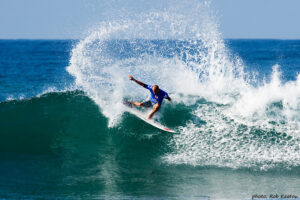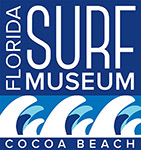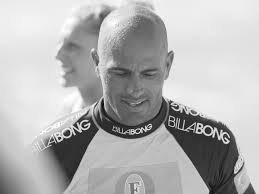Supernaturally talented pro surfer from Cocoa Beach, Florida; a record-breaking eleven-time world champion (1992, 1994–98, 2005-2006, 2008, 2010-2011 ) who reinvented virtually every aspect of high-performance surfing. “His competitive statistics numb the brain,” world champion Shaun Tomson said of Slater, “and yet his most significant contributions have come from outside the competitive arena. No sportsman in the world anywhere has for so many years been so far ahead of his peers.”

Slater was born (1972) and raised in Cocoa Beach, the son of a bait-and-tackle shop owner father, and began surfing at age five. By 11 he was an unstoppable amateur competitor, and in 1984 he won the first of four consecutive United States Surfing Championships titles, two in the menehune division and two in the boys’ division. At 14, mentored by aerialist pioneer and surfboard manufacturer Matt Kechele, Slater won not only the boys’ division of the Eastern Surfing Festival at Florida’s Canaveral Pier, but the pro division as well—turning down the money to keep his amateur status.
Turning pro at 18, Slater won the $100,000 Body Glove Surf Bout contest at Trestles in 1990, and signed a six-figure contract with beachwear giant Quiksilver. “Believe the hype,” surf journalist Ben Marcus wrote. “He is a certified phenomenon.” Slatermania, as it was soon being called, was helped by the fact that the brown-haired, green-eyed Floridian was incredibly handsome. Surfer magazine compared him to a young Elvis Presley. Surf journalist Derek Rielly, playing on the newcomer’s deification—but as astounded by his talent as anyone—wrote that seeing Slater surf for the first time was “like being led by the infant Jesus to the promised land.” People magazine included Slater in its 1991 “50 Most Beautiful People” issue.
Slater’s range and repertoire would expand in the years ahead, but at age 18 the basics were already in place. His stance and balance were similar to those of three-time world champion Tom Curren of California. Slater would never match Curren for fluidity, but his legs had more spring, his body was more limber, his approach was more innovative, and he had matchless coordination and reflexes. Wiry but strong (5’9″, 160 pounds), Slater could adjust his line from virtually anywhere on the wave; he was faster than any of his peers going into maneuvers, and the angle of his turns was more acute. Frequently powering his moves just past the edge of control—often in the form of a drifting tailslide—Slater trusted that he could find his way back to center before falling off. He also brought aerial surfing in from the sport’s fringes, not just because his success rate was higher than anybody else’s, but because he smoothly mixed aerials into the ride along with deep-set turns and cutbacks.
Slater ran hot and cold during his rookie world tour year in 1991, finished the season ranked 43rd, and was regarded as a longshot contender for the 1992 championship. But he moved into the ratings lead halfway through the 1992 season, pulled away from his rivals, won the title with room to spare in the second-to-last event, then punctuated with the season-ending victory in the Pipeline Masters. At 20, he was pro surfing’s youngest-ever world champion. Meanwhile, his moves were being studied and dissected by tens of thousands of young surfers around the world, as he starred in Momentum (1992), Taylor Steele’s debut video, as well as Kelly Slater in Black and White (1992), the first sponsor-funded video biography.
Just weeks after winning the championship, Slater announced that he had taken a supporting role on Baywatch, the banal but hugely successful lifeguard drama TV show starring the buxom Pamela Anderson. Slater left the show a little over a year later, having appeared in 10 episodes as Malibu High School surfer Jimmy Slade; he would be romantically linked to Anderson for the next seven years.
After dropping to sixth in the year-end ratings for 1993, Slater came back the following year to win the first of five consecutive championships. In the mid-’90s, Slater’s surfing was in part defined by his protean tuberiding skill; he created the butt-drag stall and the double-arm stall, perfected the no-hands backside tube stance, and even pivoted around now and then to ride the barrel as a goofyfooter. It was sublime tuberiding that won him another four Pipeline Masters titles before the decade ended (1994, 1995, 1996, and 1999), as well as the 1995 Quiksilver Pro at Grajagan and the 1995 Billabong Challenge at Jeffreys Bay. Quiksilver fittingly raised his annual salary to a rumored $1 million a year.
The even-tempered and surprisingly unaffected Slater continued to have a strong presence in the nonsurfing world: he was profiled by the Los Angeles Times Magazine in 1995, made the cover of Interview in 1996, and was profiled by Outside in 1999.
Slater briefly retired from full-time competition at the end of the 1998 season, having just won his sixth world championship, along with the 1995 and 1998 Triple Crown titles. Along with world tour friend Rob Machado and La Jolla surfer Peter King, Slater formed a band called the Surfers, with Slater playing guitar and singing lead. Their 1998 release Songs from the Pipe, produced by Grammy winner T-Bone Burnett, was released to indifferent reviews and low sales. Slater also revealed in 1998 that two years earlier he’d fathered a child out of wedlock.
Over the next three years Slater entered a few world tour contests, winning the Pipeline Masters in 1999 and the Gotcha Pro at Teahupoo in 2000. He also competed in big-wave events, finishing runner-up in the 2000 Men Who Ride Mountains event at Maverick’s and winning the Quiksilver in Memory of Eddie Aikau at Waimea Bay in early 2002.
Slater’s much-anticipated return to full-time world tour competition in 2002, however, was something of a disappointment initially, as he finished the season rated #9. But the arrival that year of Kauai’s Andy Irons reignited Slater’s competitive fire. Irons would be the only worthy rival in Slater’s career. Slater finished 2nd to Irons in 2003, lost to him again in 2004, then finally claimed his seventh world title—just ahead of Irons—in 2005. Then, for good measure, beat Irons again for the 2006 tour championship.
The titles continued to pile up—his 11th title in 2011 came at age 39—and he added a sixth Pipeline Masters trophy in 2008. Every possible pro surfing record, including most wins and most prize money, were now his. In 2012 Slater narrowly missed adding a 12th world title, losing a nail biter in the last event of the year to Joel Parkinson of Australia. 2013 was a repeat, with Mick Fanning this time winning the title, again at the last contest of the season—the Pipeline Masters—relegating Slater to runner-up, though Slater ultimately won the event, his seventh Pipe Masters win.
Slater’s sustained greatness brought further attention from the non-surfing world. Former ESPN anchor and Sports Illustrated writer Dan Patrick devoted an episode of his popular sports talk radio show in 2010 to debating whether or not Slater was the greatest athlete in history (Patrick’s answer: no, but he was close). In 2010 the U.S. House of Representatives passed a bipartisan resolution honoring Slater’s competitive achievements. GQ magazine put him on the cover of a 2011 issue dedicated to the “25 Coolest Athletes of All Time,” a list that included Muhammad Ali, Michael Jordan, and Arnold Palmer; he also posed nude for ESPN the Magazine’s 2010 “Body Issue.” The National Museum of American History at the Smithsonian added one of Slater’s boards to their public exhibition space in 2011. A refreshingly articulate Slater even made a 2009 guest appearance on NPR’s popular radio show Wait, Wait…Don’t Tell Me! On November 17 2010, the city of Cocoa Beach unveiled a 10-foot tall bronze statue of Slater on a popular waterfront promenade; the mayor officially declared the date “Kelly Slater Day.”
Slater won a record eight consecutive Surfer Magazine Readers Poll Awards from 1993 to 2001; he then repeated the feat from 2004-2012. In 2009 Surfer ranked Slater #1 in their “50 Greatest Surfers of All Time” list, just ahead of Duke Kahanamoku (#2) and Tom Curren (#3).
In 2000, Slater became the first pro surfer to have his own website. The year 2002 brought his induction into the Huntington Beach Surfing Walk of Fame and the release of Kelly Slater’s Pro Surfer video game, patterned on the best-selling Tony Hawk’s Pro Skater. Slater’s first autobiography, Pipe Dreams, was published in 2003; a second book, Kelly Slater: For the Love, co-written with Phil Jarratt, came out in 2008, the same year that he launched the Kelly Slater Wave Company, with the goal of producing world-class artificial waves.
In a surprising move that he announced to the world via social media on April Fools Day, 2014, Slater left Quiksilver, his sponsor of 23 years.
As of 2013, Slater was unmarried, and living in Santa Barbara, California. In 2011, the website CelebrityNetWorth.com estimated that Slater was worth $22 million.
Thanks to Matt Warshaw-, Encyclopedia Of Surfing, for permission to reprint this article




When Kelly Slater, made the Surfer Magazine cover for the first time ? Thanks!